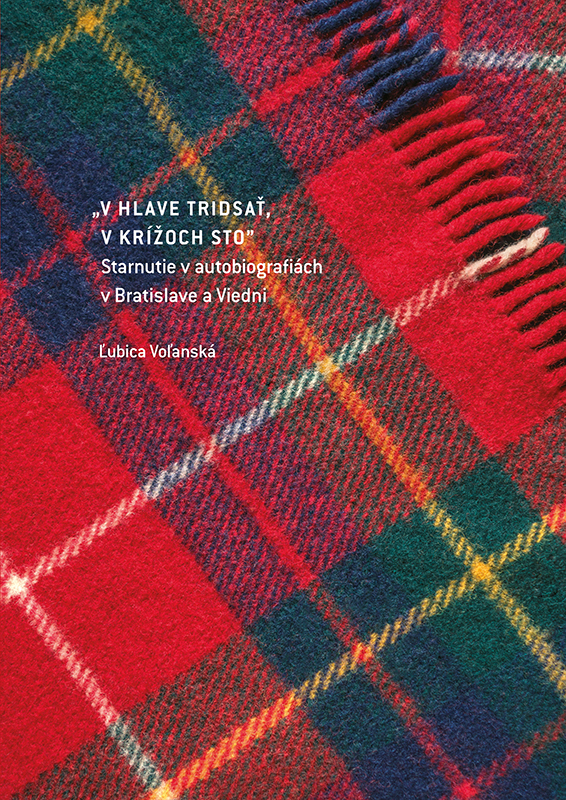„OLD BODIES, YOUNG MINDS“. Ageing in Autobiographies from Bratislava and Vienna

- VOĽANSKÁ, Ľ.: „V HLAVE TRIDSAŤ, V KRÍŽOCH STO.” Starnutie v autobiografiách v Bratislave a Viedni. („OLD BODIES, YOUNG MINDS“. Ageing in Autobiographies from Bratislava and Vienna.) Bratislava: Veda; Institute of Ethnology, 2016, 224 p., ISBN978-80-224-1544-6
The publication analyses subjective experiences with old age and the ageing life stage as a process that was little explored by social sciences and humanities in Central Europe at the time of the research and publishing of the book. Ľubica Voľanská was interested in the motivations for the behaviour and activities of the elderly, their attitudes to their own behaviour and actions, as well as those of other people, as illustrated in the autobiographical texts.
In the monograph, she observes the ambivalent perception of old age in the public and expert discourse, combined with the perception by old people themselves in connection with old age limits. She has her research partners answer commonly asked questions: Who is old? How can a time or other limit be set from when a person is old? She thus disrupts the way of placing excessive emphasis on the chronological age, which leads to a simplified understanding of the oldest generation as a uniform mass with identical experiences, needs, and functioning within the community and society. The threat of a similar perception often results in ageism and age-based discrimination, which is the source of reduced quality of life in older age. The stressing of the heterogeneity of life at old age, which is possible thanks to the perspective of “giving voice” or providing the opportunity for expressing oneself, as used by the author in the book, is one of the ways of improving the quality of life at old age also for all future generations.
The author puts the statements of older people in the context of broad expert literature across various disciplines of social sciences and humanities that deal with the limits and experiencing of old age. According to expert opinions, the monograph is useful not only thanks to the collected empirical data, but also because of their quality analysis which is based on the set methodology and responds to the previous findings published in expert literature. The publication is a pioneering work in the research topic of old age and ageing in the domestic (Slovak) context, and also offers an interesting comparative analysis. It is also through this comparative dimension that the book is inspiring for social policies when it comes to care of the oldest generation in society.